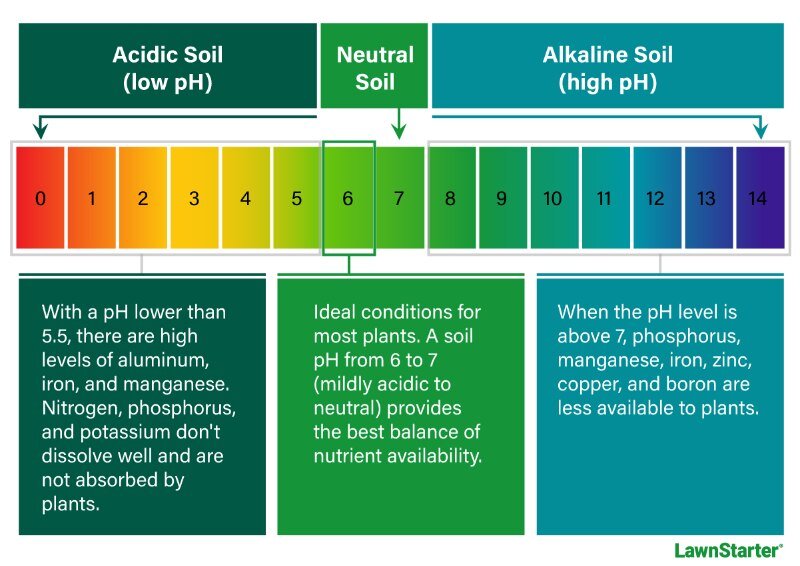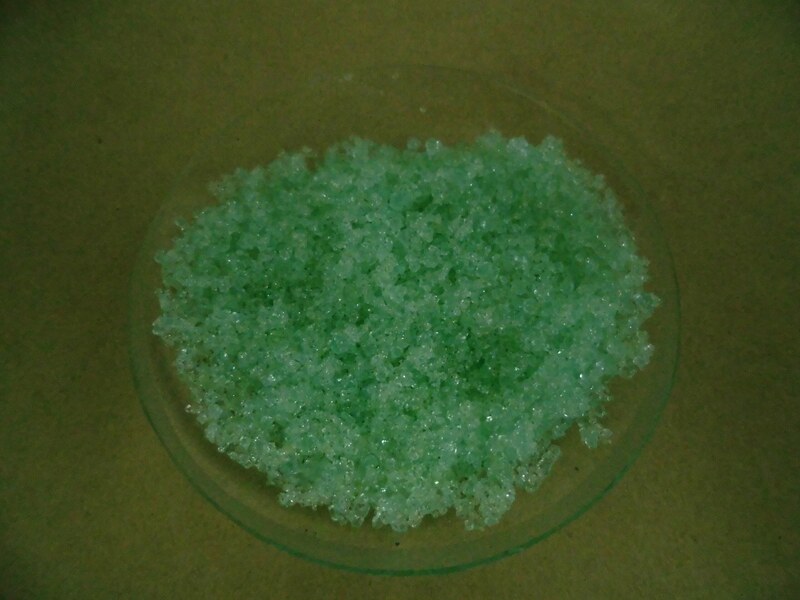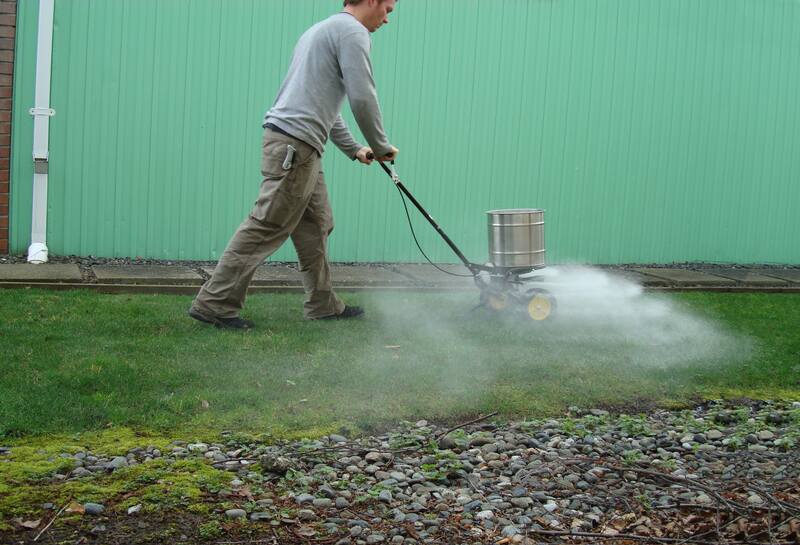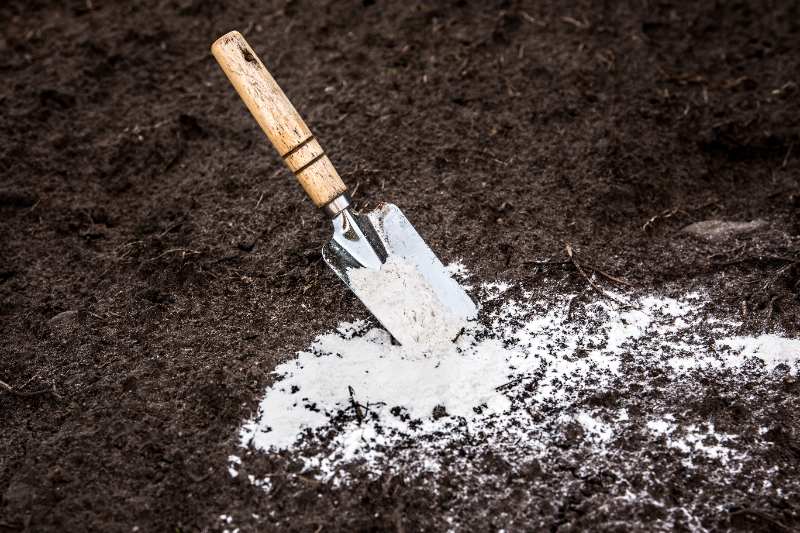
Managing your soil’s pH, how alkaline or acidic your soil is, is vital for healthy plants and a gorgeous lawn. When it’s outside of the recommended range, it can negatively affect nutrient availability, impacting plant growth.
A pH of 6 to 7 indicates slightly acidic to neutral soil, which is the ideal range. Acidic soil can be adjusted by adding lime or wood ash, raising the pH. If your soil is too alkaline, you can add elemental sulfur, aluminum sulfate, or iron sulfate to bring the soil pH down.
As a soil scientist by education, I know a thing or two about soil pH. In grad school, I tested countless samples — probably in the thousands — to check soil pH and taught undergrads how to do it in soil fertility labs. Living in an arid Idaho climate, my soil tends to be alkaline (8.2 to 8.4), so I have to amend it to keep my lawn and garden thriving.

Infographic by Juan Rodriguez
How to Lower Soil pH (In Alkaline Soil)
Amending an alkaline soil to make it more acidic is more difficult than raising the pH to make it more alkaline, especially if working with clay soil, but it is doable.
Elemental sulfur, aluminate sulfate, and iron sulfate are the most common amendments homeowners and gardeners use to lower soil pH.
Pro Tip: If chemistry isn’t your strong suit, hire a LawnStarter landscaping professional to help you achieve the optimal pH and get your lawn back on track.
Elemental Sulfur
Elemental sulfur is the safest and most economical choice, but it is also the slowest since it requires moisture and soil bacteria to break the sulfur into sulfuric acid. Like lime for acidic soils, smaller particles work faster than larger ones.
To drop your soil’s pH by about half a point, use 0.5 to 1.0 pounds of elemental sulfur for every 1,000 square feet of your garden or lawn. Keep in mind that soil texture matters significantly:
- Sandy soil needs less sulfur to get the job done.
- Heavy clay soils need more material to achieve the same pH change.
That said, paying for a professional soil test is really the best move — the lab will analyze your specific soil and tell you exactly how much sulfur to apply for perfect results, taking all the guesswork out of it.
See Related:
Aluminum Sulfate
Aluminum sulfate changes soil pH quickly because it doesn’t need soil bacteria, only water to form sulfuric acid. Its ability to adjust soil pH quickly makes it a good option for ornamental plants, like hydrangeas, that need acidic soil to turn flowers blue.
To bring an alkaline soil pH down in a hurry, aluminum sulfate is your best bet for quick results. But since aluminum can be toxic at high levels, use it cautiously for your lawn or veggies.
Iron Sulfate

Iron sulfate works more slowly than aluminum sulfate and faster than elemental, making it a good middle-ground option. It adds essential iron, helping plant growth, but you need about 8 times more than elemental sulfur to significantly reduce pH.
Personal Experience: My soil typically has an unamended pH of 8.2 to 8.4. I haven’t seen enough issues with the higher pH to warrant the work needed to adjust it for my lawn. But I do use a mix of elemental sulfur and iron sulfate on my garden soil.
I use elemental sulfur where I can till the soil in the spring, working it into the ground before planting. I scatter iron sulfate in my raspberry patch where I don’t work the ground; I water it in well, so it goes to work quicker than the elemental, and it gives an extra boost of iron to my deficient soil.
Note: Sulfuric acid is sometimes used in agriculture to lower soil pH, but homeowners should avoid using it. It is incredibly caustic and corrosive, making it dangerous, even for trained professionals.
Peat Moss
Not all peat moss can help acidify soil, but some can be used. As Joe Hannan from Iowa State University points out, Canadian sphagnum peat moss has a significantly acidic pH (around 3.0 to 4.5), making it effective for lowering soil pH.
How to Raise Soil pH (In Acidic Soil)

To make soil less acidic, add soil amendments containing base cations (typically calcium or magnesium) to replace the hydrogen ions (H+). You can use different products to raise a soil’s pH level, but lime, a calcium-based compound, is the most common method.
When choosing a lime to raise the pH in your soil, there are two primary choices: calcitic (agricultural) and dolomitic lime. They both come from finely ground limestone but are slightly different based on the parent material.
Agricultural Lime
Calcitic lime primarily contains calcium compounds: calcium carbonate, calcium hydroxide, and calcium oxide. This pure calcium formulation makes it ideal for soils with balanced magnesium levels that simply need pH adjustment.
Pro Tip: Particle size significantly impacts how quickly a lime works. Limestone doesn’t readily dissolve in water, so a finer grind creates more surface area for soil interaction, speeding up the process. Add a mix of lime particle sizes to your soil. You’ll see faster results from the small, fine particles, and the larger particles help to stabilize soil acidity over time.
Dolomitic Lime

Dolomitic limes offer dual benefits because they contain significant amounts of magnesium carbonate and calcium compounds. This makes it the perfect choice for acidic soils suffering from magnesium deficiencies, addressing two problems with one application.
Note: Don’t use anything labeled as “hydrated” limestone. These products work quickly to correct soil pH, but their caustic properties pose safety concerns, making them very dangerous.
Pro Tip: As a very general recommendation, acidic soils that only need their pH bumped up slightly need between 20 and 50 pounds of calcium carbonate per 1,000 square feet; heavy clays with strong buffering capacity may need up to 100 pounds per 1,000 square feet.
But if your soil is too acidic, I highly recommend not just guessing and throwing lime down. Go outside, take a soil sample, and send it off for analysis. The lab will test your soil, determine the pH and buffering capacity, and tell you exactly how much lime to add per 1,000 square feet to hit your target pH.
See Related:
- Lime for Lawns: Why, When, and How to Lime a Lawn
- How to Tell if Your Lawn Needs Lime (6 Steps)
- Can You Apply Lime and Fertilizer to Your Lawn at the Same Time?
Wood Ash
The ash left from burning wood is high in the base cations calcium and potassium, and has been used to amend soil pH back to the 1700s. The carbonates that form react with H+ ions, neutralizing the acidity and raising the soil pH.
It can take 2 to 4 times as much wood ash (depending on its calcium carbonate equivalent) to increase soil pH, but it works faster since it’s more water-soluble.
Note: Calcium carbonate equivalent (CCE) measures neutralizing ability compared to pure calcium carbonate. A higher CCE means greater effectiveness and reduced application rates, saving you money and time.
Oyster Shell Meal
Finely ground oyster shells offer a natural and sustainable alternative to traditional agricultural lime. This organic soil amendment primarily contains calcium carbonate, providing a long-lasting, slow-release calcium source that benefits your soil for several years.
Oyster shell meal works more gradually than standard lime. Noticeable improvements may appear within weeks of application, but it will take several months to see significant benefits.
FAQ About Changing Soil pH
After applying amendments, here’s how long you can expect to wait:
• Lime: When applying lime to change soil pH, expect it to take up to 6 months before seeing significant changes. The full effect typically takes 2 to 3 years. Unfortunately, chemical reactions take time, no matter which lime product you use. Mixing the lime into the soil well instead of letting it sit on the soil surface helps to speed up the reaction time.
• Sulfur: Elemental sulfur takes 3 to 6 months to change the soil pH. Aluminum sulfate and iron sulfate work a bit faster.
See Related: How Soil pH Affects Lawn Health
Here are some amendments that aren’t effective for either increasing or decreasing soil pH:
• Coffee grounds won’t lower your soil pH in the long run. Their pH is 6.5 to 6.8, putting them only slightly below neutral. You might see a slight decrease in pH when you add them to alkaline soils, but the effect doesn’t last.
• Ammonium fertilizers can make soils more acidic, but they aren’t a good choice for making drastic soil pH changes. You’d need large amounts to make a significant difference, so they are better suited to help maintain more acidic conditions once a desired pH is reached.
Let the Lawn Care Pros Help
Changing your soil pH is an essential step towards having a thriving lawn and garden, but it’s just one piece of the bigger puzzle. Even after you achieve the optimal pH, regular maintenance — like mowing, fertilizing, and aerating — is key to keeping your landscaping healthy and vibrant.
If you need a hand with your lawn care or gardening, reach out! Local LawnStarter professionals can handle everything from weed control to fertilization. You can sit back and enjoy a lush, green yard without the hassle.
Sources:
- “Fertilizers and Soil pH.” University of California Division of Agriculture and Natural Resources.
- “How To Change Your Soil’s pH.” By Joe Hannan, field specialist. Iowa State University.
- “Keeping pH in the Right Range is Essential.” By Kym Pokorny, master gardener. Oregon State University.
- “Soil Health – pH.” Natural Resources Conservation Service.
“Soil pH and the Home Landscape or Garden.” By Amy L. Shober, Extension specialist; Christine Wiese, assistant editor; Geoffrey C. Denny, former assistant professor; and Rao Mylavarapu, soil and nutrient management specialist. University of Florida. - “Understanding Soil pH.” By Mary Jo Gibson, master gardener. Penn State Extension.
Main Image: Wood ash. Photo Credit: tonifrito / Adobe Stock